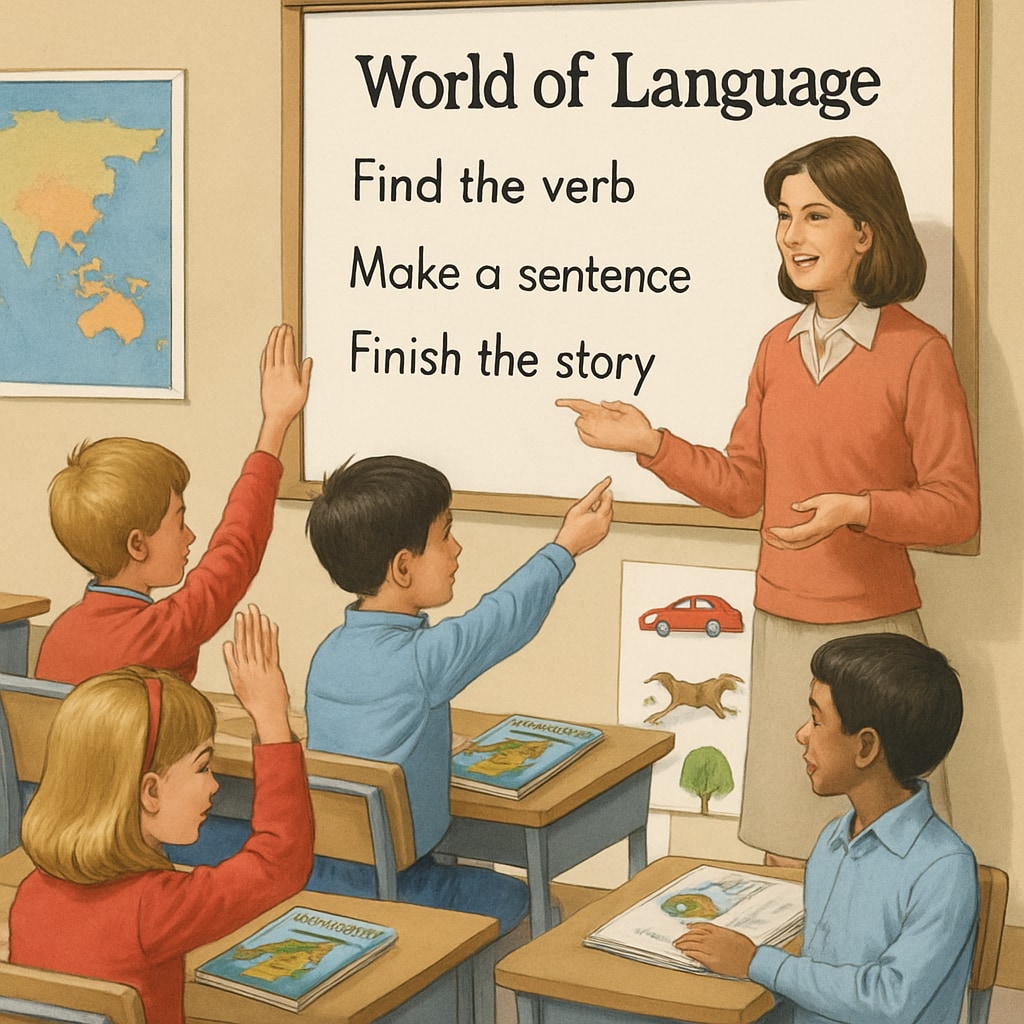“World of Language,” an elementary language textbook series, left an indelible mark on the educational journeys of countless students. Particularly memorable is the third-grade edition, featuring its iconic cat-themed cover—a symbol of curiosity and exploration. In an era where digital resources dominate, revisiting this classic textbook reveals timeless insights into systematic learning, creativity, and the importance of scientific reading methods.
A Nostalgic Look at the “World of Language” Textbooks
For many students growing up in the late 20th century, the “World of Language” series was more than just a learning tool—it was a gateway to linguistic discovery. The third-grade textbook, adorned with a charming cat on its cover, captured the hearts of young learners. Beneath this whimsical design lay a meticulously structured curriculum that balanced grammar, composition, and creative expression.
The series stood out for its ability to make language learning both engaging and challenging. It used relatable examples, colorful illustrations, and thought-provoking exercises to guide students through the complexities of language. This combination of visual appeal and academic rigor is something modern educational resources often struggle to replicate.

Innovative Teaching Methods Embedded in “World of Language”
What made the “World of Language” series so effective was its innovative approach to teaching. Unlike many textbooks of its time, it didn’t merely focus on rote memorization. Instead, it emphasized critical thinking, contextual understanding, and creative application. For example:
- Systematic Learning: Each chapter built upon the previous one, ensuring that foundational concepts were reinforced before introducing more complex topics.
- Interactive Exercises: Activities encouraged students to think beyond the textbook, such as writing their own short stories or analyzing the meaning behind idioms.
- Scientific Reading Methods: The textbook integrated reading comprehension strategies that taught students how to approach texts critically and analytically.
These methods provided a holistic learning experience, nurturing not just technical language skills but also a lifelong love for reading and writing. As a result, the series became a staple in classrooms and a cherished memory for those who grew up with it.

Lessons for Today’s Education from a Classic Textbook
In today’s digital age, where learning platforms and apps dominate, the “World of Language” textbook offers a refreshing perspective. Its success lay in its ability to combine structure with creativity—a balance that is often overlooked in modern educational tools. Here are some lessons contemporary educators and curriculum developers can draw from:
- The Importance of Visual Storytelling: The cat on the cover wasn’t just a design choice; it was a subtle invitation to explore. Visual elements can play a significant role in engaging young learners.
- Depth Over Breadth: Instead of overwhelming students with information, the series focused on mastering key concepts step by step, ensuring long-term retention.
- Encouraging Curiosity: By integrating open-ended questions and creative assignments, the series fostered critical thinking and a genuine interest in language.
As technology advances, educators must strive to preserve these principles. While digital tools offer convenience and interactivity, they should complement, not replace, the depth and intentionality of materials like “World of Language.”
For those interested in the history of educational resources, exploring the legacy of “World of Language” is a fascinating journey. You can learn more about the evolution of language education through resources like Literacy on Wikipedia or Education on Britannica.
Conclusion: Timeless Wisdom for Future Generations
The “World of Language” textbook series, with its iconic cat cover and innovative methods, transcends its time. It reminds us of the power of well-designed educational materials to shape not just academic skills but also the way we perceive and engage with the world. As we navigate the future of education, let us carry forward the lessons of this classic: a commitment to depth, creativity, and the joy of learning.
For those who remember flipping through its pages, the “World of Language” remains a cherished memory. For those discovering it anew, it is a testament to the enduring art of teaching.


